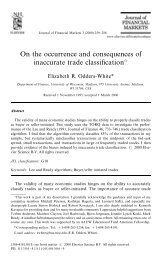A generic framework for Arabic to English machine ... - Acsu Buffalo
A generic framework for Arabic to English machine ... - Acsu Buffalo
A generic framework for Arabic to English machine ... - Acsu Buffalo
You also want an ePaper? Increase the reach of your titles
YUMPU automatically turns print PDFs into web optimized ePapers that Google loves.
4.3.3 Interlingua<br />
4.3. BASIC MACHINE TRANSLATION STRATEGIES<br />
The Interlingua approach is <strong>to</strong> develop a universal language-representation <strong>for</strong> text. In<br />
effect, in Interlingua there is no transfer map, and the MT model thus has phases: anal-<br />
ysis and generation. In a standard multilingual system with X source languages and Y<br />
target languages, the transfer approach will involve XY transfer maps; moreover, we<br />
need X analysers and Y genera<strong>to</strong>rs. In the Interlingua approach, only X parsers and Y<br />
genera<strong>to</strong>rs are needed per language. Interlingua based MT is done via an intermediary<br />
(semantic) representation of the source language text. Interlingua is supposed <strong>to</strong> be a lan-<br />
guage independent representation from which translations can be generated <strong>to</strong> different<br />
target languages. Translation needs two phases: analysis from the source language <strong>to</strong> the<br />
Interlingua (universal language) and generation from the universal language <strong>to</strong> the target<br />
language. An Interlingua translation model with eight languages is shown in Figure 4.2.<br />
Figure 4.2: Interlingua1 model with eight languages pairs<br />
52
















